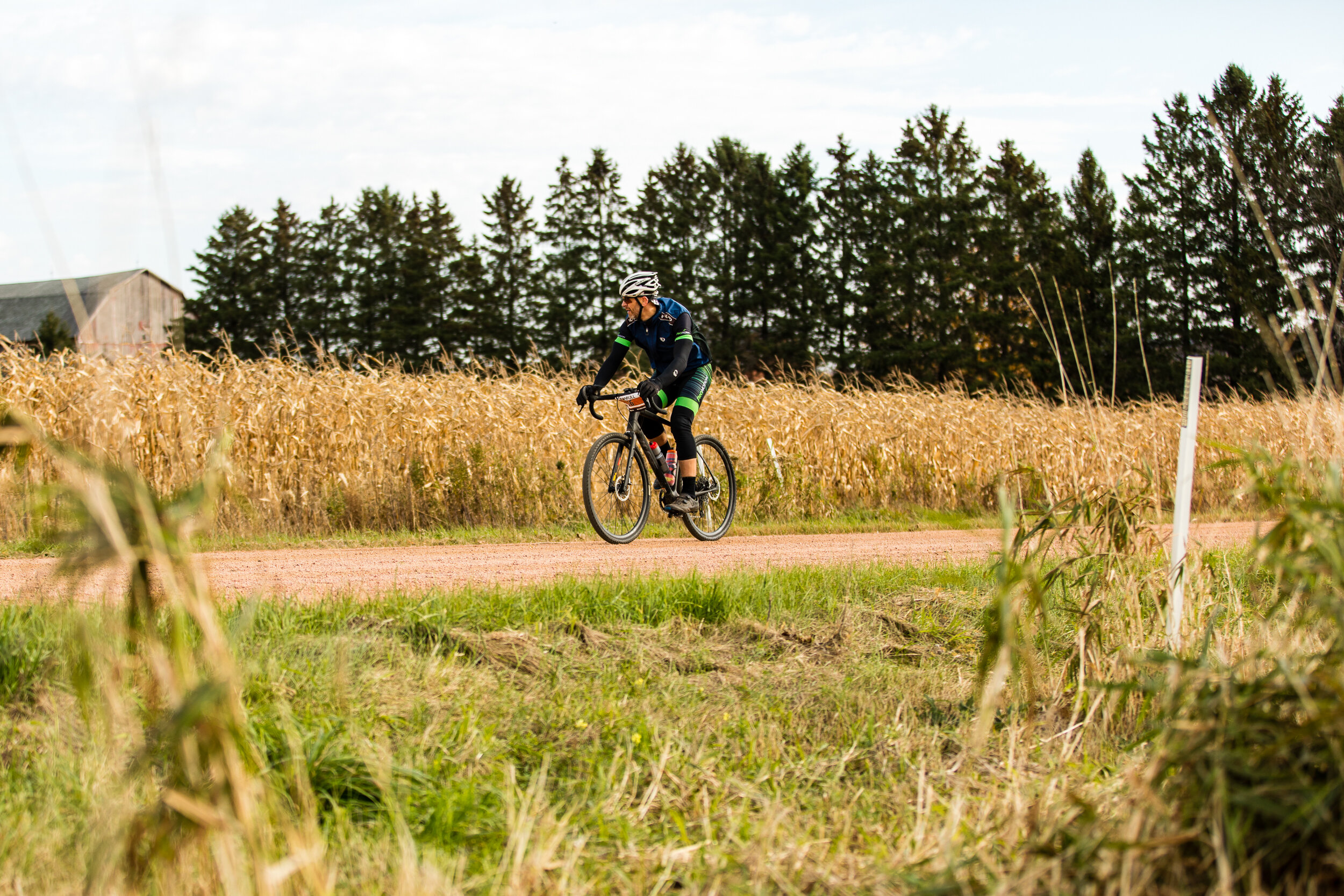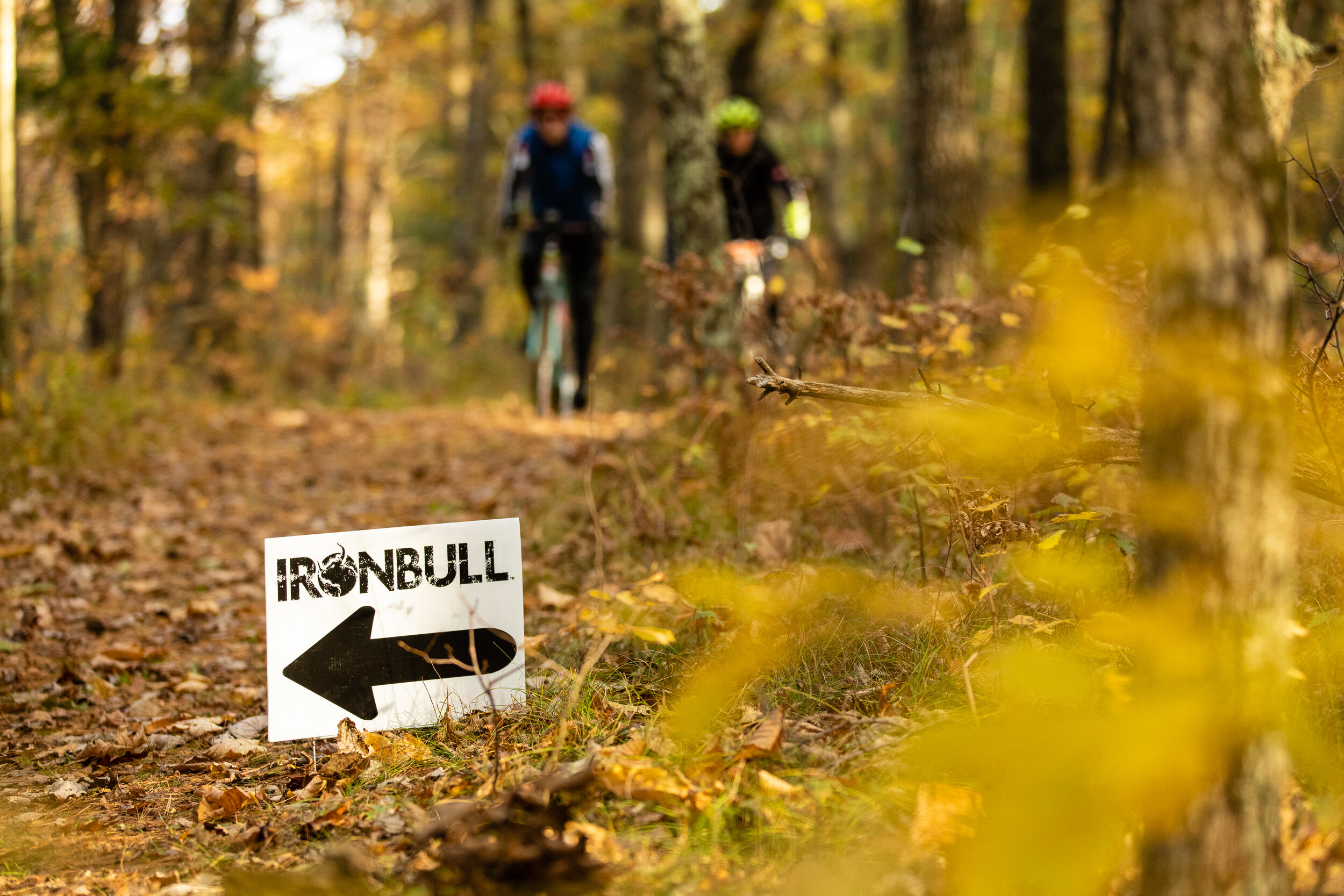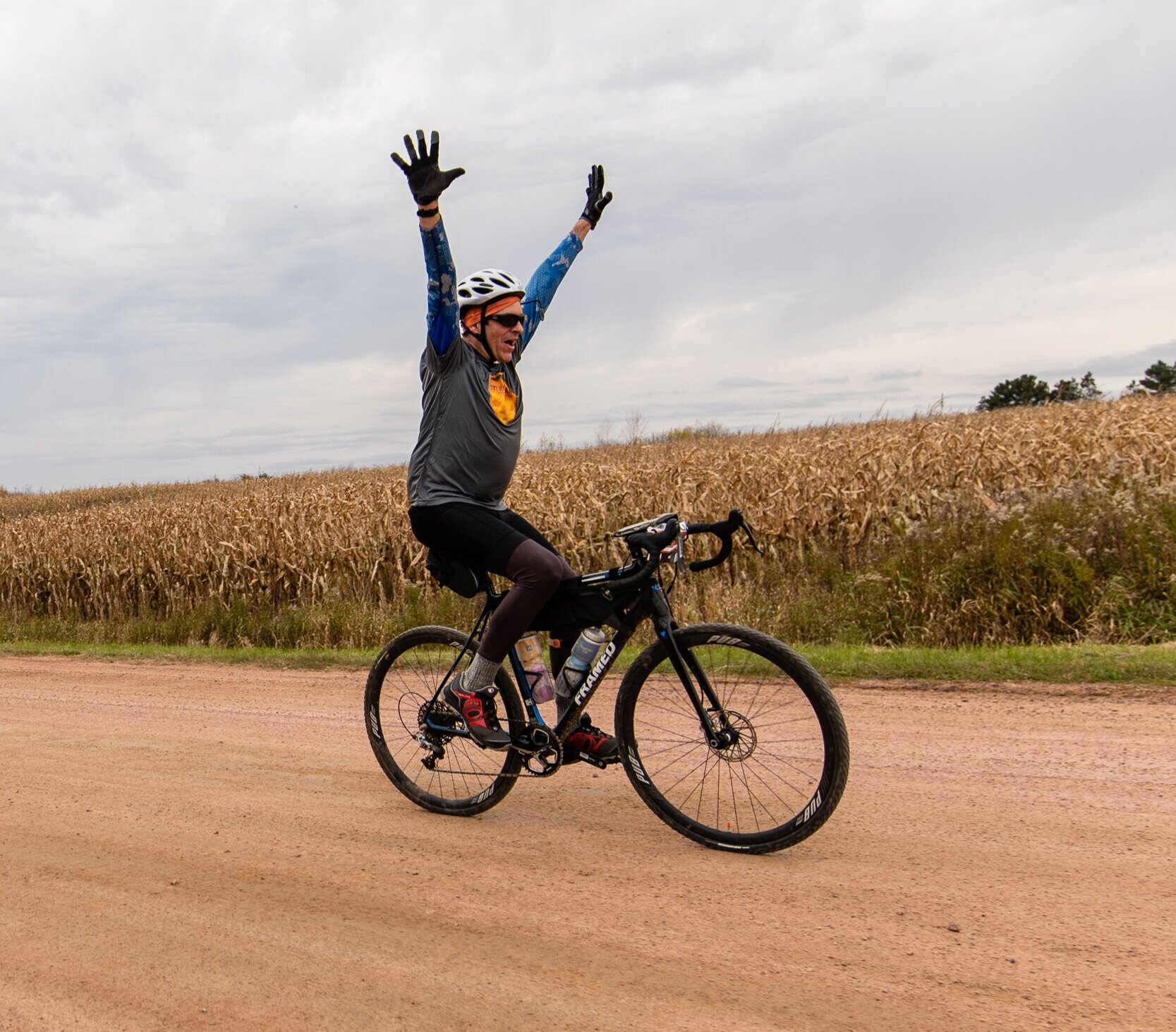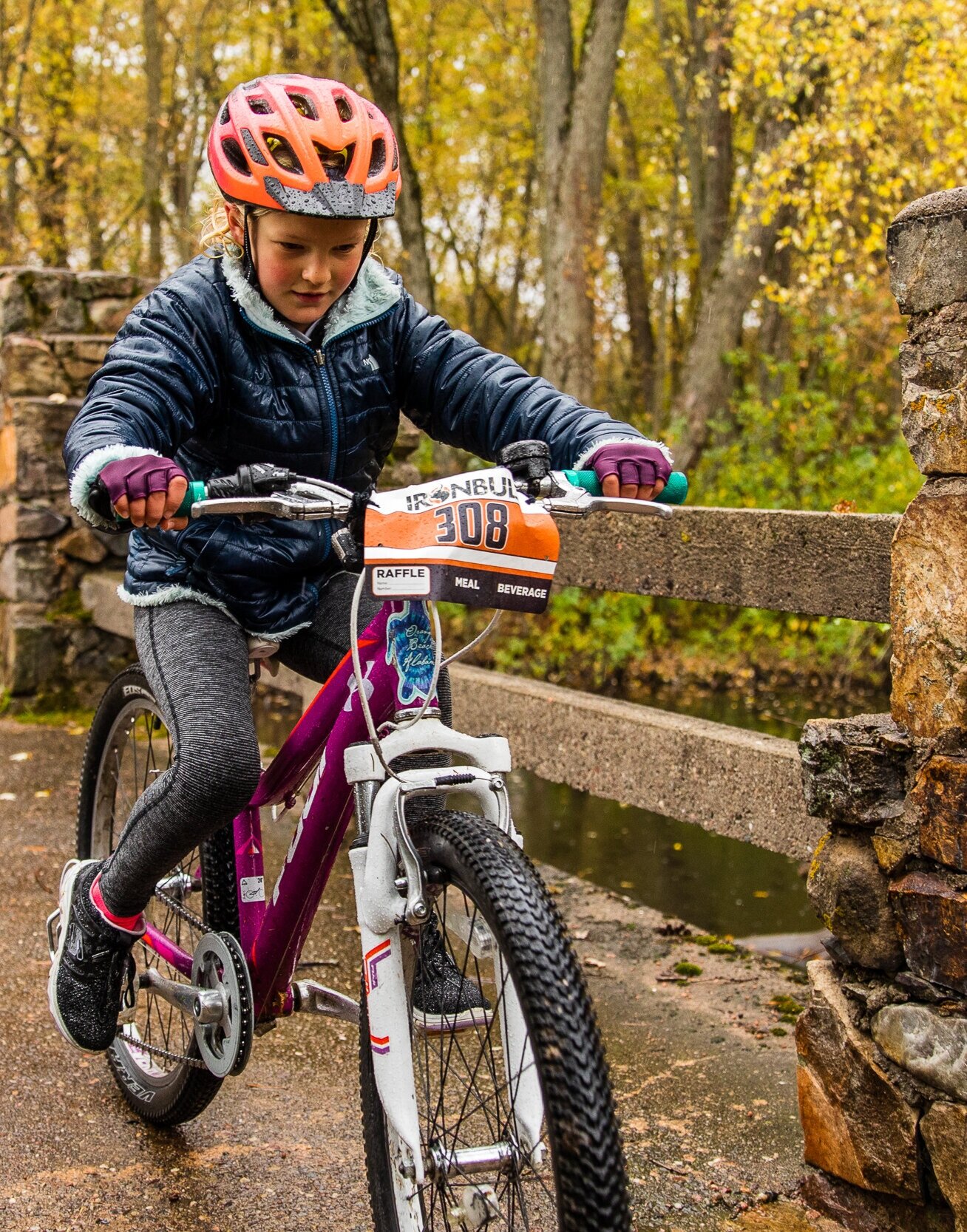Frequently Asked Questions
I’ve never done a gravel grinder before, what should I expect?
You will ride an unmarked course on roads open to traffic. The routes are designed to showcase beautiful scenery along rural, mostly gravel roads. There are aid stations to supplement your hydration and nutrition plan with drop bag access (100 and 150 mile routes) but you are responsible for your own mechanical on the route. The 50 mile route is all roads with the final mile through a well-maintained gravel trail. The routes are tiered such that the longer the route, the more adventure!
Why would I pay to ride on roads I can ride all year?
The routes have been vetted to offer some of the area’s best gravel and scenery for an experience alongside fellow riders on race days. In addition, the longer routes include featured sections not normally open to bikes. Sections include private land, beautiful wooded Managed Forest Land, and trails exclusive to bikes for this one and only day!
All riders, will have several perks listed on the registration page including aid stations with drop bag access, a free post-race meal, beverage, and prize eligibility. All 100 & 150 mile riders have trackers included and 50 mile riders may tack onto their registration so friends/families can follow them. Finally you get the opportunity to compete for bragging rights!
How much of the race course is gravel?
Each course will have a mix of surfaces, but will consist primarily of gravel and paved roads. Most of the gravel used on roads in Marathon County is red granite, making it a gravel rider’s dream!
The longer routes have a few off-road sections sprinkled in, to add to the adventure! The breakdown of each route is the following:
o 50 mile: 86% gravel roads, 12% paved roads, 2% well-maintained gravel trail
o 100 mile: 92% gravel roads, 6% paved roads, a splash of adventure doubletrack
o 150 mile: 80% gravel roads, 14% paved roads, 5 maintained gravel trails, plus an extra dose of adventure on doubletrack
what type of bike should I use?
Gravel bike racers use a variety of different bikes, with gravel bikes with a drop bar set up the fastest type of bike for this event. From a comfort standpoint, a wider tire mountain bike would be more comfortable for the length of the ride but would be slower overall. For an average gravel racer, 2.5 inch (63 mm) tires are a good fit. That being said, expect to see bikes that range from gravel bikes running as narrow as 1.25 inch (32 mm) tires to mountain bikes and even the occasional fat bike. Note that the dew in early hours or precipitation could make for slick conditions, especially on bridges/boardwalks. If choosing a narrow tire, prepare for a flat or two on the off-road sections and getting off your bike on boardwalks & technical sections.
Our suggestion: use the gravel bike setup with drop bars to gain the speed advantage on the gravel roads and suffer through the short sections off-road sections that are dispersed throughout the longer courses. Choose your tire based on what you are comfortable and used to riding on, the weather for the day and days prior to the event, and how wet of a fall we have.
Are any of the routes marked?
Only sections with turns in close proximity are marked on the 50, 50, and 150 mile courses. This includes mostly off-road sections, but not all trail turns are marked. GPS batteries die, so cue sheets are recommended.
The Kocourek Kids Ride will be marked throughout. However, due to the potential for signs to be removed, it is recommended to download the route on a GPS that is active at all times.
What if I take a wrong turn?
Even the best riders can make a wrong turn. Go back to the last point you were on the correct route.
What are cue sheets?
Cue sheets are highly recommended even if you plan to use a GPS since batteries die and electronics can malfunction. Cue sheets (and GPS files) will be provided for download the week of the event. Road names, turns, and distances are listed for a rider to follow. An odometer is recommended so riders know when they are approaching turns. A compass is also recommended to know which way to turn.
Can I do this?
Absolutely! No matter the ability level, there’s a course for everyone. We’ve had riders ranging from 4 to 78!
If you’ve never done a bike race, then start with the 50 mile race. If you want an epic challenge, go for the 150 mile route - but be prepared! Note where the routes’ major climbs and offroad sections are too.
You can stop as much or as little as you want along the course. Just make sure you follow the rules of the road.
What if I get a flat tire?
Be sure to bring a spare tube, patch kit, and bike pump. You are in charge of any mechanical repairs on the course. You are allowed to have outside assistance from a crew during the event except on private land sections of the race course.
What can my family do while I’m racing?
There are many things to do! In addition to using a tracker to help follow/cheer you on the racecourse, families may participate in the Kocourek Kids Ride, hike in Erbach Park, play on the playground, or volunteer. All are invited to the festivities on the eve of the race including a group ride, live music and Red Eye beer release!







